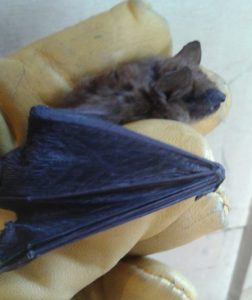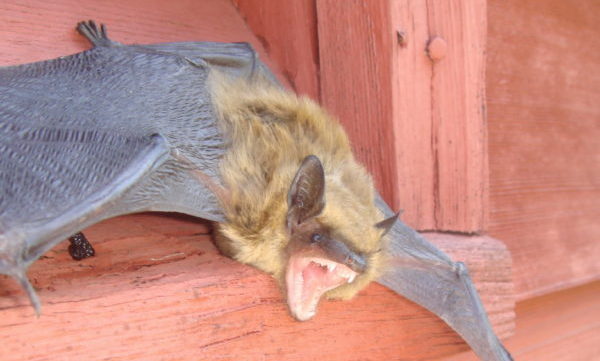
Virginia Bat Removal and Control 804-729-9097
You see, no matter how wonderful bats are to our environment, they are not the most desirable house guests to have. Nuisance bats are a common problems for both residential and commercial property owners, as they cause a large amount of stress and destruction, and pose a long list of health concerns and safety risks.
For this reason, it is important to treat a nuisance bat problem early on, before you are faced with a bigger one later on. The longer bats roost in a property, the more damage they will cause, which will require more time and labor to resolve. If you suspect that you might have a nuisance bat issue in or around your home, it is helpful to learn the basics surrounding bat removal and control. This may give you some direction and an idea of what to expect if you have bats in the attic or other area of your property.
Continue reading to review some frequently asked questions and answers about bat removal and control to get started.

Virginia Bat Removal and Control 804-729-9097
Do Bats Have Dangerous Diseases?
Bats are known carriers of the Rabies virus, but that does not mean that all bats are infected with rabies. Bats can be carriers, but not be infected. However, they can transmit the virus to another animal via their saliva or blood. The only way to accurately confirm that a bat is infected with rabies is to have their blood tested by a wildlife laboratory professional. Other than rabies, bats can pose several other health risks. Their guano can pose several bio-hazards, but largely, it can produce fungal spores that can cause a respiratory disease called Histoplasmosis, which is transmitted via inhalation. Furthermore, they can carry a wide range of parasites like lice, bat mites, and more.
How Can I Tell if I Have Bats in the House?
There are several distinct indications that bats are active in or around your property. Common signs include peculiar sounds coming from the attic area, walls, ceiling, or roof. In these same areas, you can also look for yellow and brown stains that come from bat urine and droppings. This is another common sign of a large bat infestation. A very telling signs is smelling foul odors from these particular areas. This often indicates an infestation as well.
Seeing piles of bat guano around windows, doors, or other areas of your property is another telling sign that bats are present. You can differentiate bat guano apart from other animal droppings because it looks crumbled and black, and typically contains bits of digested insects. You will commonly find guano in attics, on roofs, and around window seals. Also, if you see bats swarming or flying near your home or roof, you can definitely assume that they are tampering with your home.
Will a Bat Attack Me?
You must understand that bats are more scared of you than you are of them. They are tiny and vulnerable little creatures, and all they want in life is a dark, cozy shelter and a buffet of flying insects. So if you encounter one, whether on your property, in your house, or in nature, it is very unlikely that it will attack you. The only reason a bat might attack a human or pet is if it is rabid, dying, sick, or with it’s young, and it is provoked in some way. This is why dogs seem to get the brunt of all reported bat bites. If you see a bat, do not try to touch, catch, or harm it. If you follow these rules, a bat will likely never attack you.
What Do I Do If There is a Bat in the House?
If you find a bat in your house, do not do anything to provoke it or make it more nervous. Simply acting nervous yourself can startle a scared bat. Here’s what to do instead: First, you need to contact a licensed bat control company for emergency bat removal service. Next, you can try to isolate the bat to one area of the home. So if it is in the bedroom, simply shut the door and leave one all the windows open to encourage the bat to fly outside. Leave the room like this until our bat control specialists arrive.
Where Can I Find Trusted Bat Removal and Control in Virginia?

Virginia Bat Removal and Control 804-729-9097
